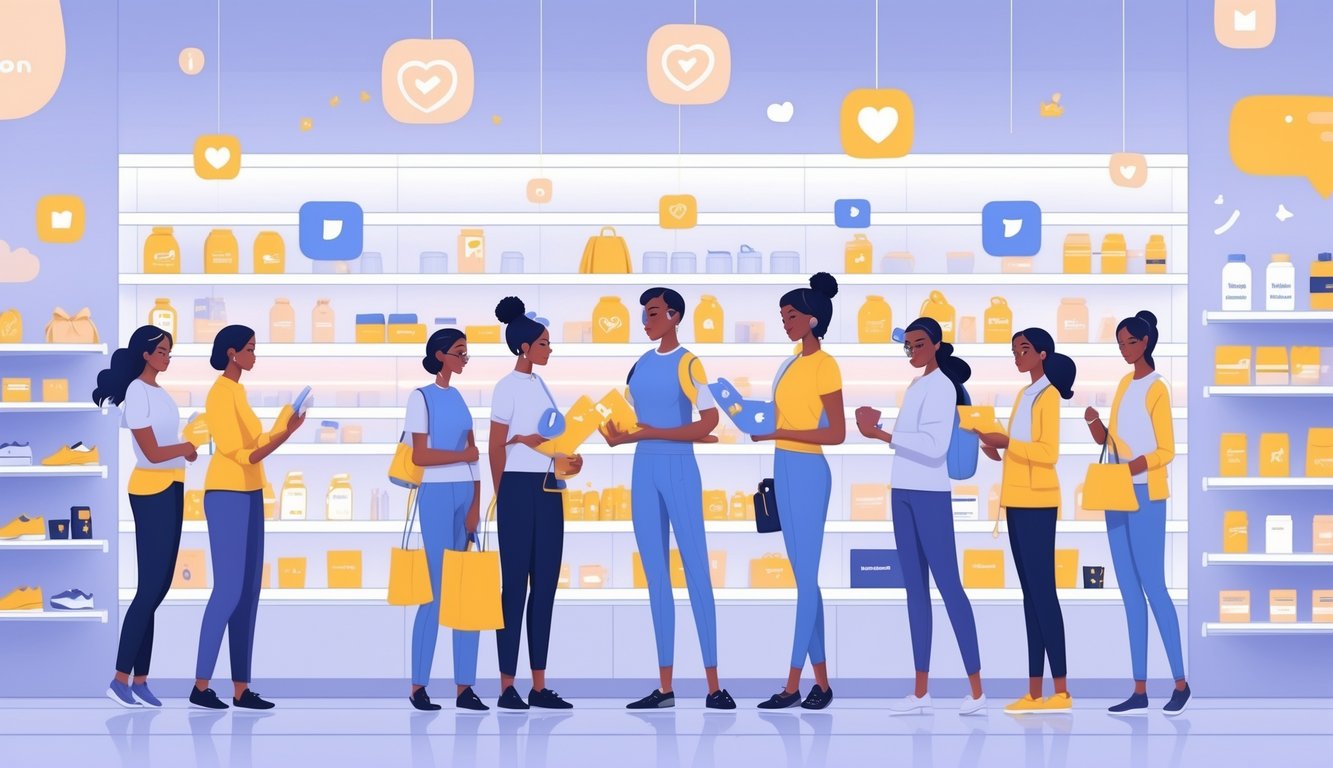
Strategic Use of Social Media Platforms

Here’s what keeps making me laugh: brands drop new influencer collabs and nobody asks why TikTok Reels for $25 socks get more clicks than a whole Facebook campaign. Everyone wants “authentic voice” until the ROI spreadsheet looks sad. Pinterest boards full of “budget finds” feel way more legit than those perfect Instagram grids, at least if you believe that Kantar study I skimmed at 2am (oh, and 44% of marketers still say finding the “right” influencer is their biggest headache).
Impact of Social Commerce on Shopping Behavior
If I scroll late and catch a Twitch streamer demoing a cheap air fryer, I’ll forget Amazon even exists. There’s this weird, live energy that regular stores just miss. TikTok, Instagram, Pinterest—they all shove native checkout at you. TikTok Shop, for example, just floods me with $12 leggings after a “haul” video. Sprout Social says social commerce will hit $80 billion in the US this year. Does anyone know which “value” messages actually work? I doubt it.
It’s beyond clicks. Gen Z trust creators over brands for recs, especially when it’s a steal, not just a trend. That $14 sunscreen link from a micro-influencer? Feels way better than an “official” sale. Too bad half the links break before checkout—UX is still a joke while everyone claims to “prioritize experience.”
Effective Content Strategies for Value Messaging
Nothing kills engagement like a $5 tee pitched with fancy fonts and moody filters. What blows up? Chaotic unboxings, “under $30” guides with real prices, side-by-sides of cheap vs. pricey. I copy what works—messy edits, abrupt cuts, no polish. Even Social Media Examiner admits you win more with quick advice on which moisturizer beats the $70 one, not slick ads.
DTC founders love to say “story first,” but nobody agrees what the story is if everyone’s yelling “best value!” I run TikTok polls (“Which $20 blender makes sorbet?”) because participatory stuff just converts better—sometimes double, according to Later.com. Last week, a kitchenware collab trended with a “$25 and under” challenge, only because the influencer admitted her spatula melted. That’s credibility.
The trick? Show receipts, admit fails, confess when you overpaid. That’s what gets reshared, not shiny hype.
Harnessing Micro-Influencers for Targeted Engagement
It’s always the same—value-focused shoppers stick to authenticity like it’s their last coupon. People ask me “why micro-influencers?” and I wish it wasn’t so obvious, but they reach niche corners big names can’t touch. Forget buzzwords like brand awareness or creator economy—I just see the numbers.
Benefits Over Traditional Celebrity Influencers
It blows my mind that brands still throw cash at mega-celebs hoping for magic. Stanford’s 2024 research: micro-influencers with 5-50K followers get up to 60% higher engagement than top-tier celebs (Aspire.io, 2024). I’ve run ad tests with a mid-tier name and a micro-influencer—same product (sunscreen stick, $15), but the micro’s post gets real questions (“Does it sting near eyes?”), not just fire emojis.
It’s almost unfair: lower CPM, more real conversions. Their followers DM, tag friends, ask about ingredients—the comments get wild, fast. The difference? Fans trust someone whose “get ready with me” reel costs $100, not $10K. I joke that value-focused shoppers can smell a sponsorship. With micro-influencers, the product fits their life, not a script.
Growing Influence of the Creator Economy
If you’re not already tired of hearing about the “creator economy,” you’re probably not online enough—or maybe you’re just better at tuning out the noise. It’s a mess: decentralized, unpredictable, and, honestly, occasionally so irritating I want to throw my phone. But brands? They have to adapt or get left behind. Micro-influencers aren’t just, like, off-brand celebrities—they’re actual people using stuff, sometimes badly, sometimes brilliantly, and always with those weird little quirks you don’t see in glossy ads. I watched someone slop a $3 hair mask onto their head in real time, and suddenly I’m thinking, “Wait, do I need that? Am I missing out?”
I spent way too long last week scrolling through a spreadsheet of micro-influencer campaigns—one nano-collab and brand awareness shot up 30%. Sales? Nah, those only budged after three people reposted some janky “unboxing” Reel. Nothing about this economy makes sense. Value shoppers? They get hyped over honest, kinda ugly videos, not those over-produced, “I’m reading a script” ads.
Micro-influencers snag loyalty with fast replies, rambling captions, and the kind of “insider” deals that feel like you’re in on a joke. Sometimes they spell “affiliate” wrong, but nobody cares—if anything, it’s endearing. And if I see one more “How to use our app” video from a faceless brand instead of a creator ranting about coupon stacking, I’m going to eat my own phone. I might actually do it.



